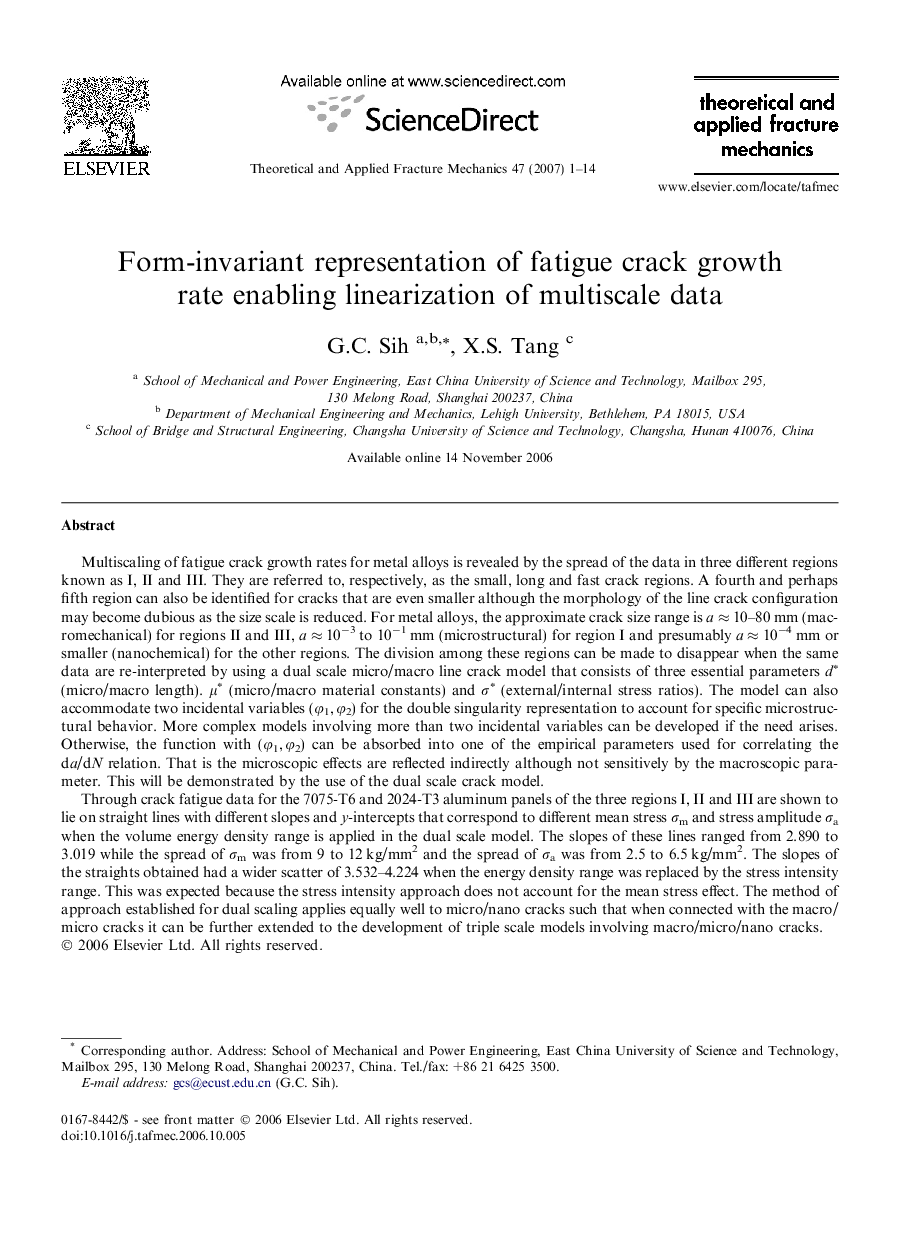| Article ID | Journal | Published Year | Pages | File Type |
|---|---|---|---|---|
| 808326 | Theoretical and Applied Fracture Mechanics | 2007 | 14 Pages |
Multiscaling of fatigue crack growth rates for metal alloys is revealed by the spread of the data in three different regions known as I, II and III. They are referred to, respectively, as the small, long and fast crack regions. A fourth and perhaps fifth region can also be identified for cracks that are even smaller although the morphology of the line crack configuration may become dubious as the size scale is reduced. For metal alloys, the approximate crack size range is a ≈ 10–80 mm (macromechanical) for regions II and III, a ≈ 10−3 to 10−1 mm (microstructural) for region I and presumably a ≈ 10−4 mm or smaller (nanochemical) for the other regions. The division among these regions can be made to disappear when the same data are re-interpreted by using a dual scale micro/macro line crack model that consists of three essential parameters d∗ (micro/macro length). μ∗ (micro/macro material constants) and σ∗ (external/internal stress ratios). The model can also accommodate two incidental variables (φ1, φ2) for the double singularity representation to account for specific microstructural behavior. More complex models involving more than two incidental variables can be developed if the need arises. Otherwise, the function with (φ1, φ2) can be absorbed into one of the empirical parameters used for correlating the da/dN relation. That is the microscopic effects are reflected indirectly although not sensitively by the macroscopic parameter. This will be demonstrated by the use of the dual scale crack model.Through crack fatigue data for the 7075-T6 and 2024-T3 aluminum panels of the three regions I, II and III are shown to lie on straight lines with different slopes and y-intercepts that correspond to different mean stress σm and stress amplitude σa when the volume energy density range is applied in the dual scale model. The slopes of these lines ranged from 2.890 to 3.019 while the spread of σm was from 9 to 12 kg/mm2 and the spread of σa was from 2.5 to 6.5 kg/mm2. The slopes of the straights obtained had a wider scatter of 3.532–4.224 when the energy density range was replaced by the stress intensity range. This was expected because the stress intensity approach does not account for the mean stress effect. The method of approach established for dual scaling applies equally well to micro/nano cracks such that when connected with the macro/micro cracks it can be further extended to the development of triple scale models involving macro/micro/nano cracks.
